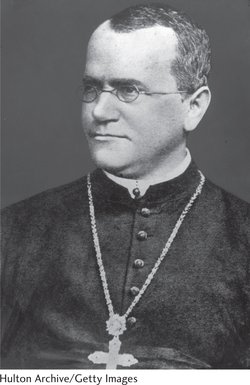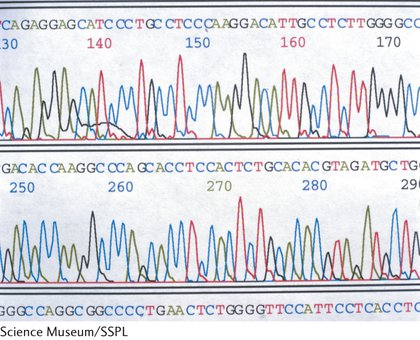The Rise of the Science of Genetics
In 1676, Nehemiah Grew (1641–1712) reported that plants reproduce sexually by using pollen from the male sex cells. With this information, a number of botanists, including Gregor Mendel (1822–1884; Figure 1.12), began to experiment with crossing plants and creating hybrids. Mendel went on to discover the basic principles of heredity in the 1860s.

Developments in cytology (the study of cells) in the 1800s had a strong influence on genetics. Building on the work of others, Matthias Jacob Schleiden (1804–1881) and Theodor Schwann (1810–1882) proposed the cell theory in 1839. According to this theory, all life is composed of cells, cells arise only from preexisting cells, and the cell is the fundamental unit of structure and function in living organisms. Biologists interested in heredity began to examine cells to see what takes place in the course of cell reproduction. Walther Flemming (1843–1905) observed the division of chromosomes in 1879 and published a superb description of mitosis. By 1885, biologists generally recognized that the cell nucleus contains the hereditary information.
Charles Darwin (1809–1882), one of the most influential biologists of the nineteenth century, put forth the theory of evolution through natural selection and published his ideas in On the Origin of Species in 1859. Darwin recognized that heredity was fundamental to evolution, and he conducted extensive genetic crosses with pigeons and other organisms. He never understood the nature of inheritance, however, and this lack of understanding was a major omission in his theory of evolution.
In the last half of the nineteenth century, cytologists demonstrated that the nucleus had a role in fertilization. Near the close of the nineteenth century, August Weismann (1834–1914) finally laid to rest the notion of the inheritance of acquired characteristics. He cut off the tails of mice for 22 consecutive generations and showed that the tail length in descendants remained stubbornly long. Weismann proposed the germ-
| Concept | Proposed | Correct or incorrect |
|---|---|---|
| Pangenesis | Genetic information travels from different parts of the body to reproductive organs | Incorrect |
| Inheritance of acquired characteristics | Acquired traits become incorporated into hereditary information. | Incorrect |
| Preformationism | Miniature organism resides in sex cells; thus all traits are inherited from one parent. | Incorrect |
| Blending inheritance | Genes blend and mix. | Incorrect |
| Germ- |
All cells contain a complete set of genetic information. | Correct |
| Cell theory | All life is composed of All life is composed of cells. | Correct |
| Mendelian inheritance | Traits are inherited according to specific principles proposed by Mendel. | Correct |
The year 1900 was a watershed in the history of genetics. Gregor Mendel’s pivotal 1866 publication on his experiments with pea plants (discussed in more detail in Chapter 3), which revealed the principles of heredity, was rediscovered. Once the significance of his conclusions was recognized, other biologists immediately began to conduct similar genetic studies on mice, chickens, and other organisms. The results of these investigations showed that many traits indeed follow Mendel’s rules.
In 1902, after the acceptance of Mendel’s theory of heredity, Walter Sutton (1877–1916) proposed that genes are located on chromosomes. Thomas Hunt Morgan (1866–1945) discovered the first genetic mutant of fruit flies in 1910 and used fruit flies to unravel many details of transmission genetics. The foundation for population genetics was laid in the 1930s, when geneticists begin to integrate Mendelian genetics and evolutionary theory.
Geneticists began to use bacteria and viruses in the 1940s; the rapid reproduction and simple genetic systems of these organisms allowed detailed study of the organization and structure of genes. At about the same time, evidence accumulated that DNA was the repository of genetic information. James Watson (b. 1928) and Francis Crick (1916–2004), along with Maurice Wilkins (1916–2004) and Rosalind Franklin (1920–1958), described the three-
By 1966, the chemical structure of DNA and the system by which it determines the amino acid sequence of proteins had been worked out. Advances in molecular genetics led to the first recombinant DNA experiments in 1973, which touched off another revolution in genetic research. Methods for rapidly sequencing DNA were first developed in 1977, which later allowed whole genomes of humans and other organisms to be determined. The polymerase chain reaction, a technique for quickly amplifying tiny amounts of DNA, was developed by Kary Mullis (b. 1944) and others in 1983. This technique is now the basis of numerous types of molecular analysis. In 1990, the Human Genome Project was launched. By 1995, the first complete DNA sequence of a free- TRY PROBLEMS 19 AND 20
TRY PROBLEMS 19 AND 20
